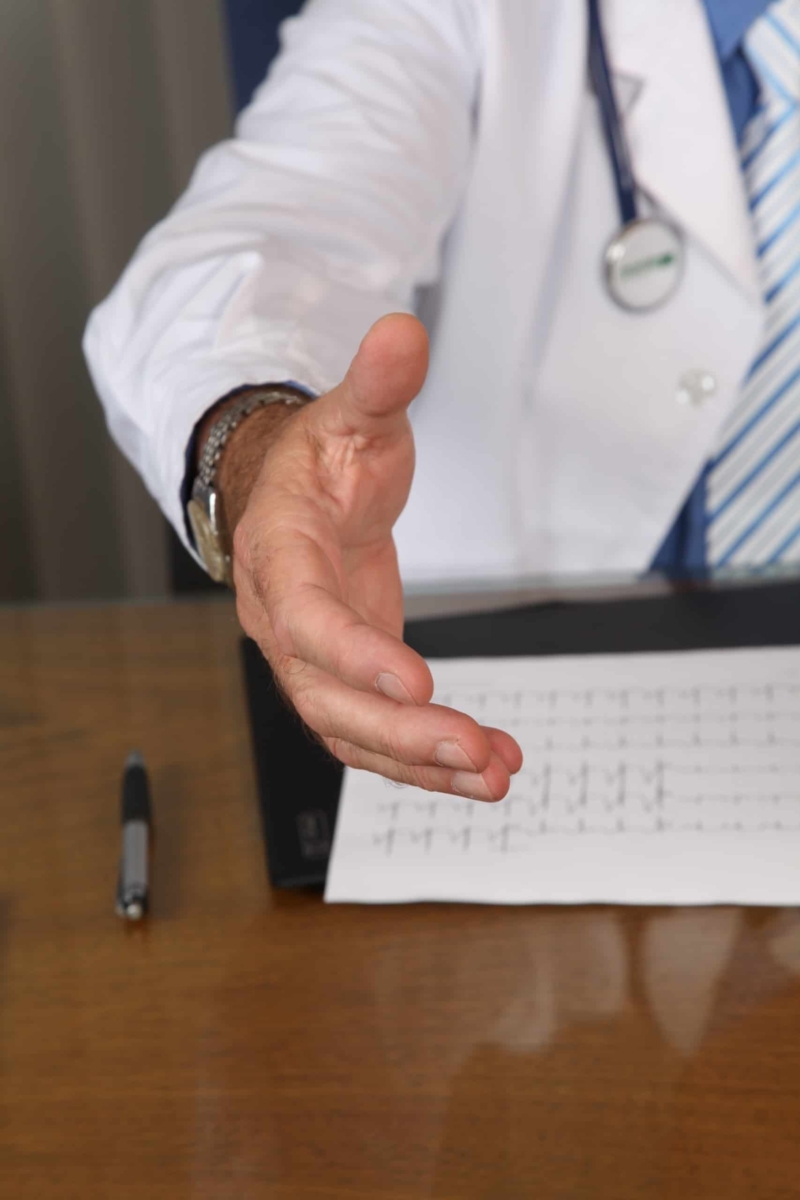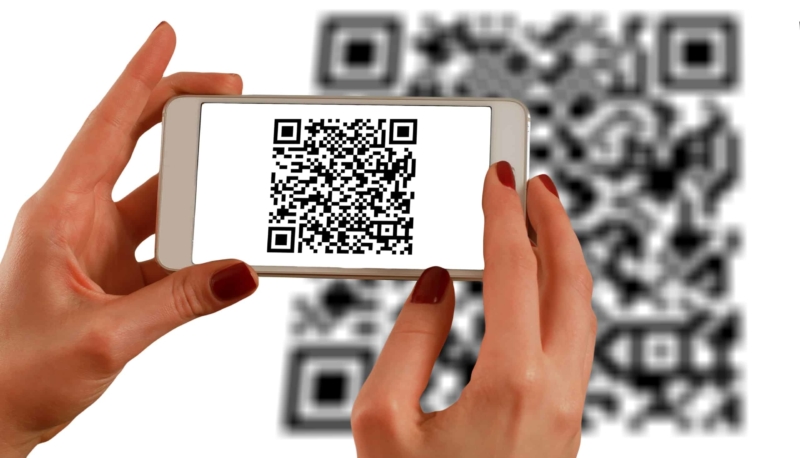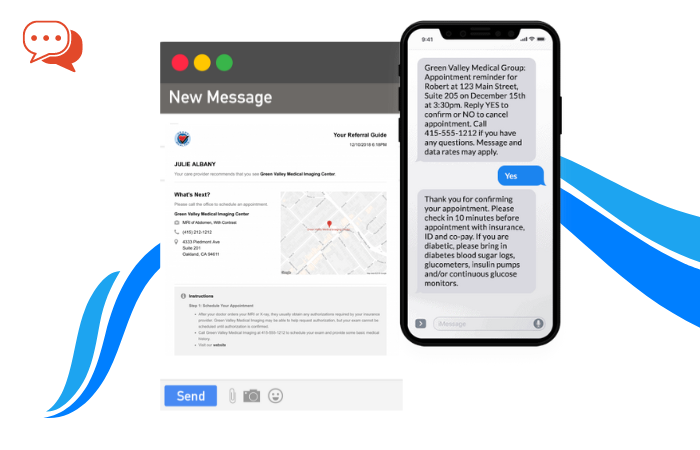Hospitals, clinics, and healthcare providers have often struggled with a lack of productivity and inefficient operations. Not that they’re technologically backward, but the excessive dependence on staffing and manual processes has hindered their ability to stay productive.
QR codes have emerged as a solution to this hurdle. Let’s look at the many uses of QR codes in the healthcare sector and how hospitals can optimize their frontend and backend operations.

Photo by valelopardo on Pixabay
How Can Hospitals, Clinics, and Staff Benefit from Increased Productivity?
Hospitals, clinics, and other healthcare facilities remain an essential component of the health network. As a result, the spending on healthcare has only increased. Recent data from Health Affairs shows that in 2017, the US’s total healthcare spending increased by 3.9% to $3.5 trillion – about 18% of the total GDP. Of that, 30% goes into wasteful spending related to excess administrative costs, inefficiently delivered services, and high prices.
Moreover, research from Navigant showed that hospitals could save $25.4 billion annually by eliminating unnecessary costs and streamlining supply chains. The low productivity of healthcare facilities can be attributed to numerous reasons, such as:
- Suboptimal use of the clinical workforce
- Complex administrative systems
- Lack of returns on technology investments
- Increased technician staffing hours
While drilling down the reasons for low productivity is important, what’s more, crucial is the impact it causes. One adverse outcome, as discussed above, is the increased costs. But what’s worse is that it affects the quality of service administered to patients in need. A research paper published in Hindawi highlighted the direct relationship between healthcare productivity and service quality.
Therefore, improving productivity can help hospitals and healthcare facilities in three ways.
- Reduced healthcare and operational costs
- Increased staff productivity and satisfaction
- Improved service delivery and quality
Now, how can clinics and hospitals improve their productivity levels? According to McKinsey and Company, hospitals don’t need to undergo massive operating model shifts or implement significant technological advances. Minor changes can help you better utilize the human and technical resources on hand.
Healthcare providers can combine the following approaches to boost productivity levels:
- Implementing and broadening the use of automatic consultation and referral systems like ReferralMD to manage appointments and reduce the burden from the staff
- Using technologies like QR codes to speed up patient admission, documentation, and billing processes saves time and reduces expenses.
How Can QR Codes Help Improve Processes and Increase Efficiency?
The rise of QR codes has been incremental. They have evolved over the years as new applications of QR codes have continued to emerge. Simply put, QR codes enable a seamless flow of data. They integrate offline and offline experiences, which allows you to share and store information more easily.
Since the healthcare sector is increasingly data-driven and relies on a copious amount of documentation and patient records, QR codes can help store and manage that information more efficiently.
Let’s look at how QR codes can help hospitals improve their processes and increase operational efficiency.
Faster Patient Identity Identification and Admissions
Offering seamless patient admissions is essential for any healthcare provider, and it boils down to identifying patients promptly. Inaccurate patient identification can delay patient admission and affect diagnosis and increase the risk of testing and medication errors. QR codes can help healthcare providers with quicker identity management, enabling them to store patient data from admission to discharge. You can embed QR codes in the patients’ wristbands and track their information in real-time.
Hospitals and clinics can also use QR codes to allow patients to book appointments on the go. Since healthcare providers have a brick-and-mortar presence, using out-of-home (OOH) advertising techniques like billboards, brochures, newspaper ads, etc., is crucial. You can use a QR code generator to add a custom QR code in these ads and link it to an appointment scheduling page. Patients can scan the code, enter their details and book an appointment from their mobile device. This can drastically improve your patient admission process and provide a better experience to your patients.
Live Patient Status Update
The QR-code-enabled wristbands we discussed in the previous section can also help healthcare providers get a live patient status update. Every smartphone camera nowadays comes with a QR code API. When patients return to the hospital, providers can scan the QR code on the wristband to update the patients’ health. Also, patients can scan the QR code on the wristband and share the details with the doctor. This will help doctors monitor patients’ health in real-time.
Another potential application of QR codes is sharing helpful information with patients. When patients come to a hospital, they’re stressed and worried. They want to know everything from the problem they’re suffering from to precautions they should take to the diet they should follow. Doctors can’t answer all these questions.
To overcome this hurdle, you can put up QR codes on the registration desk, waiting room, or patient ward and link them to information related to disease, diet, care, etc. Patients or their caregivers can scan the code and learn all they want about the condition and how to fight it.
Insurance Processing and Documentation
QR codes can be beneficial when it comes to sharing documents. As discussed, healthcare is a document-extensive industry. For example, patients need to produce insurance documents to claim the insured amount. The hospital staff needs to verify the document to ensure that the patient is eligible for claiming the insurance amount.
If the process is entirely paper-based, it’ll be inconvenient for both the patients and providers. Patients will need to carry various paper documents, which could be damaged or lost at any time. Providers need to go through all the records manually, which is time-consuming and prone to errors.
Putting up QR codes on these documents can resolve this hurdle. These codes can be linked to insurance details, such as the insured amount and eligibility. The hospital staff can scan the QR code to determine the insurer’s eligibility in real-time, thereby speeding up the insurance process.
QR codes can also help patients and hospitals entirely ditch paper documents. Instead of carrying all the documents in paper form, patients can carry QR codes linked to those documents. The hospital staff can scan the code and obtain all the insurance details on their smartphone, which will improve the insurance processing process even further.
Billing Management and Tracking
The chances are that the first time you heard of QR codes, it was due to their widespread use as a payment tool. It’s hard to overlook the impact QR codes have had on the digital payments landscape. In China, QR codes are the preferred mode of digital payments. More than 15 million SMBs, including healthcare providers, accept Alipay’s QR code payments.
Now, as Apple Pay, PayPal, Google Pay, and Amazon Pay also support QR codes, healthcare providers can ditch cash payments and accept QR code payments, which are faster and more secure.
In addition to accepting payments, you can also include QR codes on your bills and e-bills to provide additional information. For example, the QR code on the invoice can be linked to data like invoice number, GST number (if applicable), invoice value, HSIN code, etc. Doing so will help smoothen the taxation process and optimize the overall financial process of your healthcare organization.
Lastly, QR codes are highly trackable, so using them for billing management and tracking can help you understand your patients better. For instance, if you use QR code payments, you can determine how many people have scanned the code, the device used, the amount of payment made, etc. This information can help you better understand your customers and drive informed business and marketing decisions.
Improving Hospital Backend Operations
The applications of QR codes aren’t confined to frontend operations and improving the patient experience. You can also leverage QR codes to optimize the efficiency of your backend operations.
Let’s look at how hospitals and clinics can use QR codes for backend processes.
QR Codes for Dissemination of Information
Numerous uses of QR codes in the field of healthcare education have emerged. These include:
- Increased participant engagement
- Just-in-time (JIT) learning
- Simulation
- Training support
BMC Medical Education, an open-access journal, conducted a study to identify and evaluate the uses of QR codes in healthcare education. The study provided an overview of the diverse use cases of QR codes in healthcare education.
QR codes provide information in a timely, cost-effective, and multimodal manner. It also improves student engagement due to the ease of use, availability, and immediacy compared with the methods available to access information.
The study found the following applications of QR codes in information dissemination.
- QR codes containing anesthesia syllabus data were introduced, and students used them for case logging.
- Researchers created a doctoral-level practicum experience using QR codes, and all students reported that QR codes were easy to use and beneficial.
- QR codes were used to gamify a medication sorting task for nurses.
- QR codes were placed around the room as trigger prompts for augmented reality (AR) and interactive storytelling for healthcare students.
While the use of QR codes for healthcare information dissemination is still in its early stages, the above applications build a strong case for the potential benefits of QR codes in healthcare education.
QR Codes for Inventory Management
If you delve deeper into the history of QR codes, you’ll find out that they were originally developed to modernize large and complicated inventory systems. Even though numerous other uses of QR codes have come to light, they remain an effective tool for optimizing inventory management tasks.
The chances are that you’re already using 2D barcodes and age-old scanning devices to manage the items moving in and out of your inventory. QR codes can improve this process in two ways. First, they can store more information than barcodes for almost no additional cost. Second, scanning them doesn’t require specialized devices. All smartphone cameras allow you to scan QR codes.
QR codes also help in reducing errors. QR codes can work just fine even after getting damaged by 50-70%. This ensures that your inventory doesn’t run into issues even if the QR code on a product is slightly damaged.
Lastly, QR codes help with real-time tracking. You can stay on top of scanning information like the location and time of the scans to get detailed tracking information for each product.
Wrapping Up
The healthcare industry is relatively alien to the true potential of QR codes. But several healthcare practices and institutions have been exploring the applications of QR codes for both frontend and backend operations. The ability of QR codes to store and share a comprehensive amount of data makes them an ideal pick for optimizing your healthcare operations.











